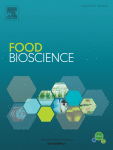View Item
- xmlui.general.dspace_homeCentros Regionales y EEAsCentro Regional Tucumán - Santiago del EsteroEEA FamailláArtículos científicosxmlui.ArtifactBrowser.ItemViewer.trail
- DSpace Home
- Centros Regionales y EEAs
- Centro Regional Tucumán - Santiago del Estero
- EEA Famaillá
- Artículos científicos
- View Item
Biopolymer production by bacteria isolated from native stingless bee honey, Scaptotrigona jujuyensis
Abstract
The products of stingless bees have been used in traditional medicine. These products have gained economic potential not only for their historical valuation but also to produce added value related to the knowledge of the qualities of their indigenous microbiota. The isolates from honey and pollen of Scaptotrigona jujuyensis, a stingless bee from Northern Argentina were studied. These were able to produce hydrolytic enzymes: protease, amylase, xylanase,
[ver mas...]
The products of stingless bees have been used in traditional medicine. These products have gained economic potential not only for their historical valuation but also to produce added value related to the knowledge of the qualities of their indigenous microbiota. The isolates from honey and pollen of Scaptotrigona jujuyensis, a stingless bee from Northern Argentina were studied. These were able to produce hydrolytic enzymes: protease, amylase, xylanase, cellulose, and lipase, and growing in bile salts.
The isolate 4A was identified as a Bacillus sp. and was able to produce extracellular exopolysaccharides (EPS). The carbohydrate composition of EPS consisted predominantly of fructose (44.6%). Structural characterization of EPS using Fourier-transform infrared spectroscopy (FTIR) showed high similarity with levan.
The EPS showed antimicrobial activity and the capacity to form emulsion hydrogels with omega-3 polyunsaturated fatty acids (PUFA) from ray liver oil and chia oil. The prebiotic property of Lactobacillus casei was evaluated with EPS and its mix with omega-3 PUFA. L. casei, showed better growth. Thus, an EPS with emulsifying hydrogel capacity and prebiotic activity was produced from the native microbial flora present in the honey of a stingless bee, which could be an added-value product of the S. jujuyensis colony used as a new nutraceutical.
[Cerrar]

Author
Salomon, Virginia María;
Gianni De Carvalho, Katia;
Arroyo, Florencia;
Maldonado, Luis Maria;
Gennari, Gerardo Pablo;
Vera, Nancy Roxana;
Romero, Cintia Mariana;
Fuente
Food Bioscience 42 : 101077 (August 2021)
Date
2021-04
Editorial
Elsevier
ISSN
2212-4292
Documentos Relacionados
Formato
pdf
Tipo de documento
artículo
Proyectos
(ver más)
INTA/PNAPI-1112043/AR./Estrategias para agregar valor a la producción apícola argentina.
INTA/PNAPI-1112044/AR./Gestión y mejora del servicio ambiental de polinización
Palabras Claves
Derechos de acceso
Abierto
 Excepto donde se diga explicitamente, este item se publica bajo la siguiente descripción: Creative Commons Attribution-NonCommercial-ShareAlike 2.5 Unported (CC BY-NC-SA 2.5)
Excepto donde se diga explicitamente, este item se publica bajo la siguiente descripción: Creative Commons Attribution-NonCommercial-ShareAlike 2.5 Unported (CC BY-NC-SA 2.5)

